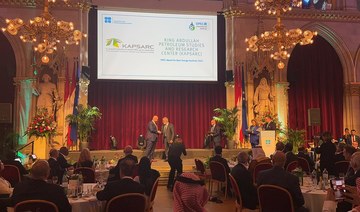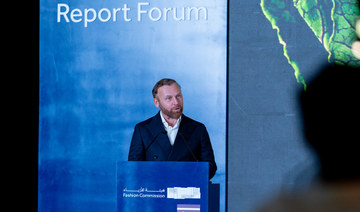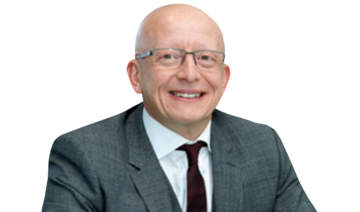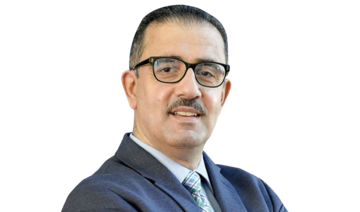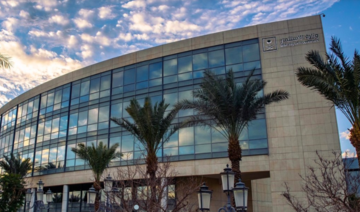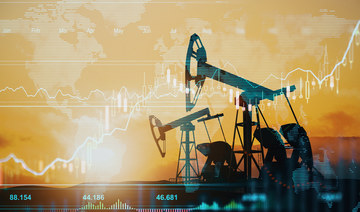Amid widespread efforts by the Organization of the Petroleum Exporting Countries to stabilize the oil market, the King Abdullah Petroleum Studies and Research Center disclosed that lifting sanctions on Venezuelan and Iranian oil will not have any short-term impact on the sector.
In its recently released report, KAPSARC stated that Iran’s oil production will likely grow to 5 million barrels per day with or without sanctions. In contrast, Venezuelan oil production is unlikely to reach 1 million bpd under sanctions.
Venezuelan oil production in 2022 was 723,000 bpd, significantly below the record it reached in 1997 of 3.52 million bpd.
Iran has a slight upper hand compared to Venezuela, as the Middle Eastern nation’s oil production stood at 3.82 million bpd in 2022, compared to 4.85 million bpd in 2017.
KAPSARC, however, added that Venezuelan oil production could hit 1.5 million bpd if the US, EU and its allies lift the sanctions. “Iran is already expanding its production and exports under sanctions and lifting them would accelerate this process.
However, lifting sanctions on Iran may be slowed by production limitations under the OPEC+ Declaration of Cooperation,” said KAPSARC in the report.
The report added: “Venezuela, with or without sanctions, has a limited upside. Lifting sanctions would help the country stabilize its market with a slow reverse in its production trend. It is estimated that the country could see a total increase of up to 500,000 bpd over the next seven years.”
In May, OPEC Secretary-General Haitham Al-Ghais said the organization would welcome Iran’s full return to the oil market when sanctions are lifted.
Venezuela has the largest proven oil reserves worldwide, with 303.2 billion barrels as of 2022, while Iran holds the fourth position with 208.6 billion barrels.
In Venezuela, sanctions have been linked to anti-democratic actions and human rights violations. In contrast, sanctions against Iran are based on the Joint Comprehensive Plan of Action on nuclear weapon development.
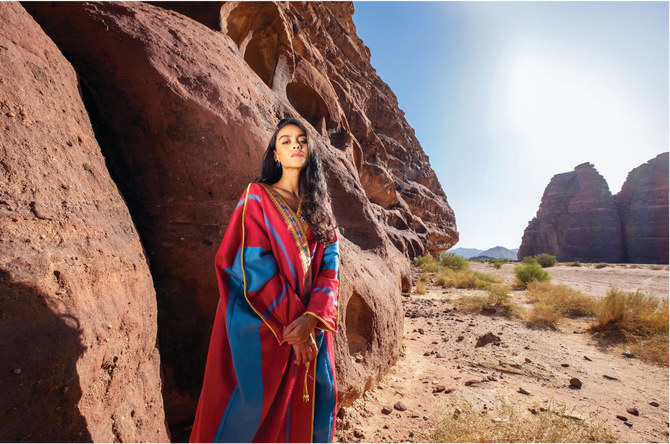
- Saudi Arabia’s market for fashion is on the rise, thanks to both public and private players
RIYADH: Until recently, the Saudi capital of Riyadh was hardly ever looked upon as a hotspot on the global fashion circuit. New York, Milan and Paris — these are the mainstays for fashion weeks, the cities where established and aspiring designers, buyers, and journalists have long gathered.
But times are changing, and Gulf countries are quickly becoming new hubs for the industry, particularly Saudi Arabia, where retail demand for fashion products has been forecast to increase by 48 percent to $32 billion in 2025, with the luxury field set to enjoy a 19 percent growth.
FASTFACT
Times are changing, and Gulf countries are quickly becoming new hubs for the industry, particularly Saudi Arabia, where retail demand for fashion products has been forecast to increase by 48 percent to $32 billion in 2025, with the luxury field set to enjoy a 19 percent growth.
With the first ever Riyadh Fashion Week underway from Oct. 20 to 23, Saudi designers will come into the spotlight on the catwalk in the capital of their own country. It is one of several of the Fashion Commission’s recent initiatives, following the launch of the ‘Saudi 100 Brands’ exhibition during Paris Fashion Week in June.
“Fashion retail has always been an attractive sector, specifically for women in Saudi,” Marriam Mossalli, a Saudi lifestyle editor, journalist and founder of communications agency Niche Arabia, told Arab News. “From sourcing fabric to working with local tailors; to selling within their immediate community; the profession has fit comfortably within our local ecosystem.”

She added: “Today, however, the appeal is global. With social media and e-commerce, the potential for many designers has grown exponentially as it’s not limited to their local market.”
The attention being paid to the industry signals the government’s belief in the sector’s potential for economic growth.
This shift has not happened by chance. The fashion industry has been identified as a key avenue for economic diversification for Saudi Arabia and is one of the non-hydrocarbon sectors rapidly on the rise.
Under the Fashion Commission, which was one of 11 such bodies established in 2020 by the Ministry of Culture, a plethora of initiatives to further grow the sector both publicly and privately are being implemented.
The commission’s March 2023 report “The State of Fashion in the Kingdom of Saudi Arabia 2023” provides an analysis of the Kingdom’s fashion value chain.
It revealed Saudi Arabia’s plan to reduce reliance on overseas imports and put the country on the map by using homegrown talent. It also highlights the sector’s potential for growth.
In the report, Saudi Fashion Commission CEO Burak Cakmak said: “We are building the foundations for the future of fashion right now, here in Saudi Arabia.”
With retail demand for fashion products projected to increase by 48 percent to $32 billion by 2025, the Saudi fashion industry is positioned for significant expansion.
In 2021, Saudi Arabia’s fashion industry spent $7.3 billion on imported goods, showcasing the potential economic impact of fostering domestic capabilwities.
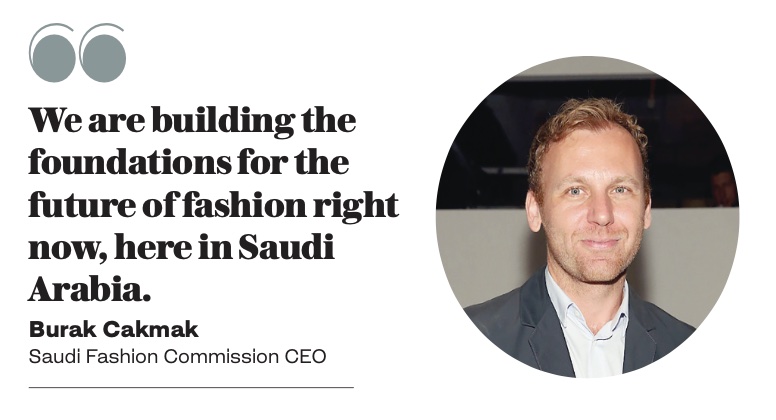
The report showcases the sector’s rapid development, its strategic alignment with the nation’s Vision 2030, and how the Kingdom’s youth are putting the country on the global fashion stage through new designs and product launches.
It states how the fashion ecosystem is estimated to contribute to 1.8 percent of the total Saudi workforce, employing 230 000 people. The industry has a 52 percent female participation in the Saudi fashion workforce and 66 percent Saudization within core fashion jobs. This workforce is made up of 90,000 core fashion occupations and 140,000 related roles.
Moreover, domestic retail sales in the Kingdom are forecasted to reach $32 billion in 2025, a 30 percent growth from 2021’s total of $24 billion. Luxury fashion is a significant driver of growth, with the market growing by 19 percent in 2021 due to repatriation of spending given travel restrictions, increased female empowerment and the continued rise of e-commerce.
The market for fashion in the Kingdom is also growing due to external players and their eagerness and readiness to do business in Saudi Arabia.
These include the major luxury and fashion retail powerhouse Dubai-based Chalhoub Group, which has increasingly been doing business in the Kingdom.
Jasmina Banda, chief strategy officer at Chalhoub Group, says the business has been operating in the Kingdom for over 30 years, and currently operates over 250 stores spread across the Kingdom.
It also has over 4,000 team members, six warehouses, and is currently building a state-of-the-art fulfillment facility in Riyadh. It has dedicated offices across the Kingdom, including retail academies.
“For Chalhoub, the Kingdom remains our second-largest market,” Banda told Arab News. “In the luxury space, Saudi Arabia is overall the second-largest market, even though that varies by category.
“For example, in prestige beauty, Saudi is a strong number two, competing with the UAE, while in high-end fashion it comes in at No. 4, after the UAE, Kuwait, and Qatar, as it is a category extensively bought abroad.”
She added: “Over the last few years the Saudi fashion market has seen a strong growth, especially during the COVID-19 years when the borders were closed.
“Since reopening, we continue seeing increased offshoring of luxury spend abroad and we expect major transformations in our retail categories to happen in the coming years, as new shopping malls open — currently there are more than five luxury destinations in different stages of construction in the Kingdom.”

Saudi women have long been known as big buyers of luxury fashion, Banda said, adding that people in the Kingdom are known for following trends on social media and being well-traveled.
“That is further shifting with the socio-demographic changes in Saudi Arabia, stemming from female empowerment and increasing workforce participation, as well as changes in the habits driven by entertainment options – cinemas, restaurants, concerts, etc.,” she said.
Banda also explained how when it came to marketing to Saudi consumers, buying and merchandising are tailored to the consumer preferences in terms of silhouette, color palette and sizing.
“Especially important seasons, such as Ramadan, are addressed through dedicated capsule collections, and specific marketing campaigns and activations. It is important to be bring to the customer global brands, in a tailored ‘glocal’ way,” she said.
All of Chalhoub’s largest luxury fashion brands are already present in Saudi Arabia.
Banda notes how in the luxury sector, Saudi Arabia represents 9 percent of the global market, due to the offshoring of spend. Saudis are often the top nationality shopping in Dubai, and increasingly in Qatar. In prestige beauty, however, Saudi Arabia represents one third of the Gulf Cooperation Council market.
“On the other hand, for some of the leading watches and jewelry brands, Saudi Arabia is the No. 1 market in the region by size. Maturity really varies by category,” she said, adding: “However, Saudi consumers are also frequent clients of top luxury brands in Europe, previously in the UK and France, and now predominantly in France — since the UK stopped tax free.”
Saudi spending on fashion will likely grow “exponentially,” she emphasizes, “once the country fully delivers on its tourism ambitions.”
The Fashion Commission’s report states how major opportunities for economic growth now lie within the sector’s nascent domestic fashion industry.
Rajaa Moumena, who sits on the board of the fashion association that works directly with the commission, believes the local industry is still in the early stage of development.

She said: “It is currently at the phase of awareness and setting up the appropriate legislation to create an enabling environment for entrepreneurs to start their businesses.
“This involves addressing various aspects such as licensing, permits, and regulations that govern the industry.”
One of the primary focuses, stresses Moumena, of Vision 2030 is to promote local production and reduce reliance on imports. This includes the production of all types of clothing, ranging from ready-to-wear garments to high-end haute couture. By encouraging local production, Saudi Arabia aims to create job opportunities, boost economic growth, and retain revenue within the country.
She emphasized that education is key for the domestic sector to grow.
“As the industry evolves and adopts new concepts, it is essential for educational institutions to keep pace with these changes. This means updating curricula, offering specialized courses, and providing students with practical skills required for the fashion industry. This will help opening doors to many jobs where skillful people are needed in the industry,” said Moumena.
By encouraging the Saudi youth to be creative and business savvy, Riyadh may soon be a permanent fixture on the global fashion calendar.
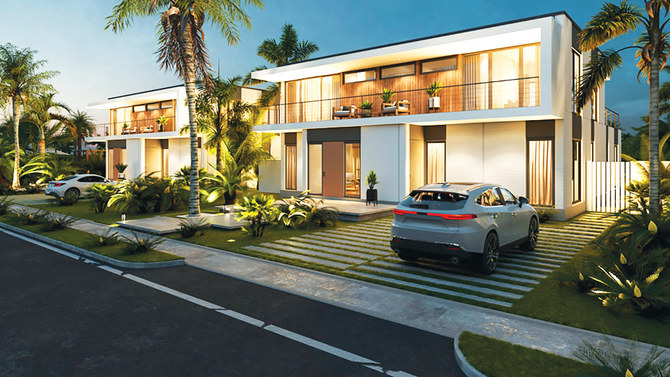
- Barakah raises $1.5m in seed funding for surplus food management
CAIRO: Saudi firms have taken the venture ecosystem by storm with startup activity dominating activity in recent weeks.
Saudi Aramco’s $500 million venture capital subsidiary Wa’ed Venture made global headlines as it co-led a $52 million series B funding round in US-based construction technology startup Mighty Buildings.
Founded in 2017, Mighty Buildings is recognized for its work in 3D printing technology to create prefabricated homes that are both environmentally friendly and climate resilient.
The series B proceeds are earmarked for the expansion of Mighty Buildings’ factory footprint in North America.
Additionally, the company aims to extend its operations to new markets, specifically targeting Saudi Arabia and the UAE.
“This recent funding underlines Mighty Buildings’ leadership in the modular homebuilding market. It will accelerate our growth by funding the international expansion to one of the most exciting homebuilding regions in the world,” said the firm’s Chief Financial Officer Rene Griemens.
“We are thrilled about the support from such esteemed investors for our mission: solving the housing and climate crises by transforming the way the world builds homes,” Griemens added.
The investment aligns with Wa’ed Venture’s focus on nurturing technology innovations and adds another layer to Saudi Arabia’s growing interest in sustainable and advanced construction solutions.
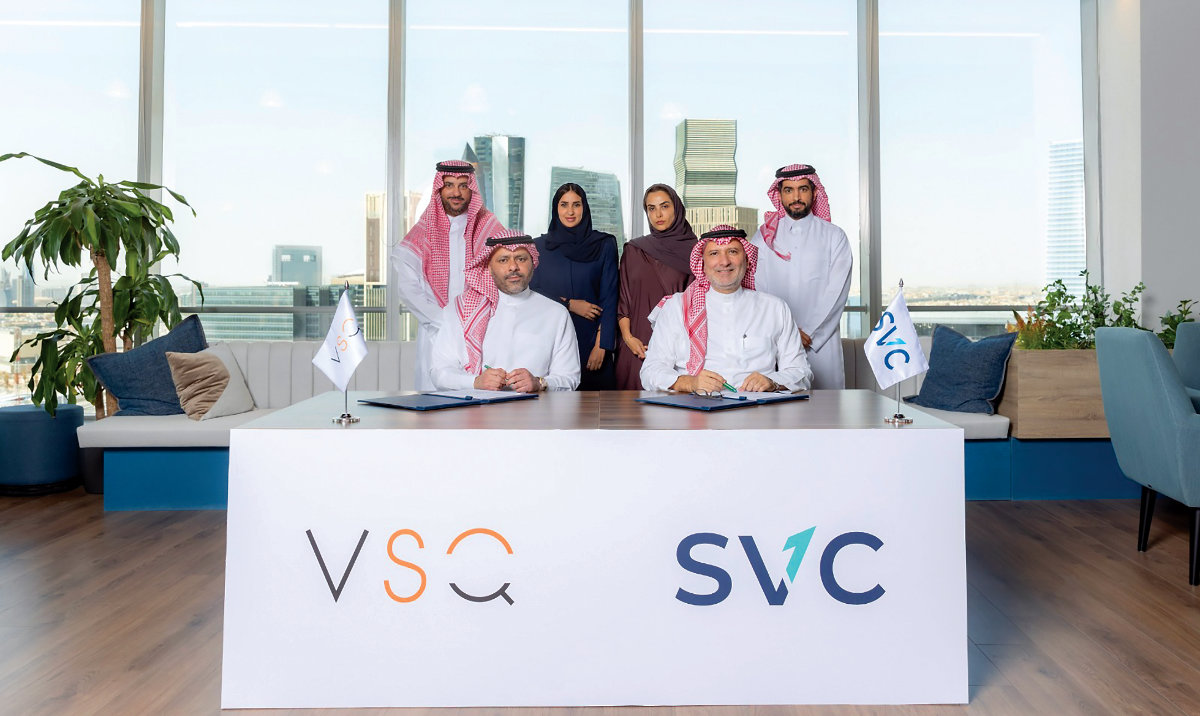
“The team at Mighty Buildings has reaffirmed our confidence in the incredible and diverse potential for innovation lying within the construction tech industry,” said Fahad Alidi, managing director at Wa’ed Ventures.
“Our investment in the company reflects our belief that innovative materials, as those used in Mighty Buildings’ proprietary 3D-printing, will be a major driver for scalability and sustainability of homebuilding in the Gulf Region,” Alidi added.
With this fresh infusion of capital, the startup has now amassed a total of $153 million in funding since its inception.
The investment round also saw contributions from BOLD Capital, Khosla Ventures, and 15 other new and existing investors.
Saudi Arabia’s Barakah raises $1.5m in seed funding for surplus food management
Saudi-based online marketplace Barakah has successfully completed a seed funding round, raising $1.5 million.
The startup focuses on helping food retailers manage their surplus inventory, claiming to have saved over 100,000 meals from going to waste in a 10-month period.
The investment round was led by Hambro Perks Oryx Fund and included participation from other investors such as 500 Global, +VC, KAUST Innovation Ventures, and Annex Investments.
The funding aims to enhance Barakah’s existing operations and facilitate its planned expansion into additional major cities in Saudi Arabia beyond its current markets of Riyadh and Jeddah.
“Our aim at Barakah is to reshape perceptions around surplus food,” said Abdulaziz Al-Saud, CEO of Barakah.
“We’ve created a platform where excess inventory transforms into a viable business opportunity. Our partners gain a valuable solution to drive revenue and operational efficiency, while our customers enjoy fresh meals and products at unmatched prices. Beyond curbing waste, Barakah is building a bridge between food retailers and discerning consumers,” Al-Saud added.
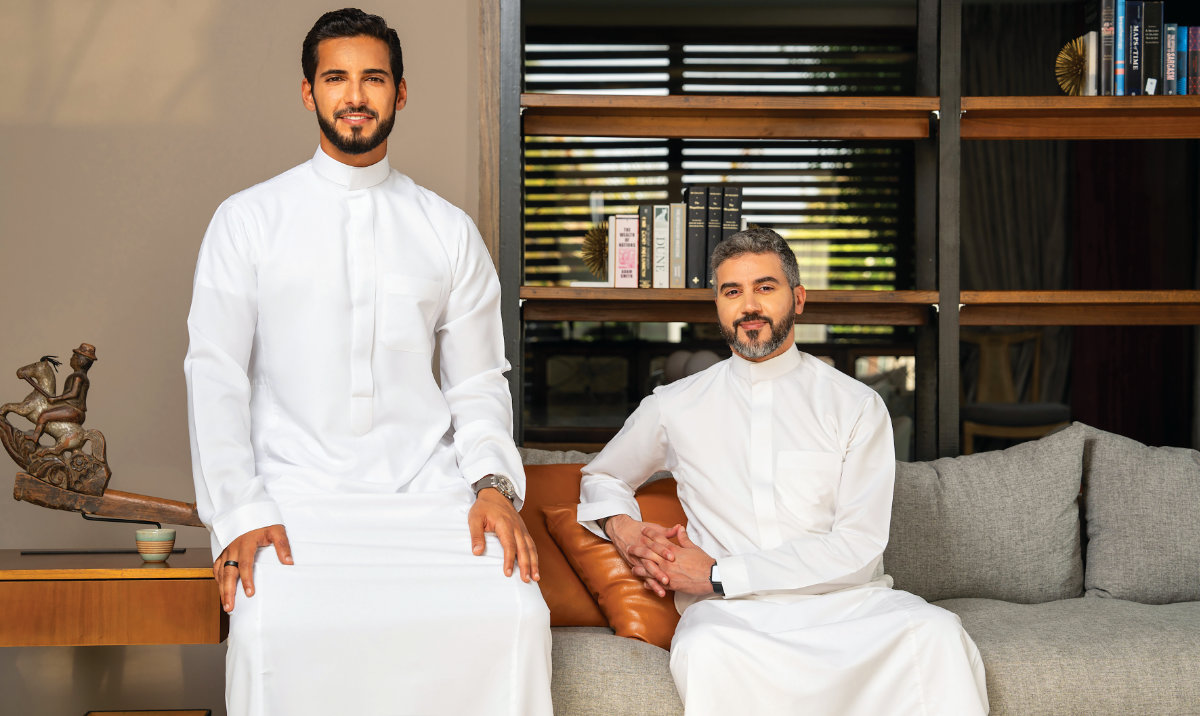
Ivo Detelinov, general partner of Hambro Perks Oryx Fund, noted that the investment aligns with their interest in startups that address challenges like food waste.
Similarly, Gary Rubin, Head of KAUST Innovation Ventures, mentioned that Barakah’s objectives coincide with KAUST’s focus areas of sustainability.
Saudi Venture Capital invests $5m in VentureSouq’s fintech fund
Saudi Venture Capital has announced a $5 million investment in a fintech fund managed by UAE-based VentureSouq.
The focus of the fund will primarily be on early-stage fintech startups.
The agreement was formalized in a ceremony attended by key figures from both SVC and VSQ, including Nabeel Koshak, CEO and board member at SVC, and Maan Eshgi, general partner at VSQ.
“The investment in the fintech fund by VSQ is part of SVC’s Investment in Funds Program to support the development of the VC ecosystem in Saudi Arabia for all sectors and stages,” Koshak said.
“This investment also comes to foster the growth witnessed recently by the fintech sector, which made it at the forefront of the venture capital scene in Saudi Arabia in 2022 in terms of the number of deals and value of investment,” he added.
Maan Eshgi of VSQ also commented on the deal, noting the significance of fintech as a rapidly evolving field.
Eshgi cited Saudi Arabia’s leading role in the Middle East and North Africa region in fintech innovation, particularly in emerging technologies like web3, artificial intelligence, and quantum computing.
HIGHLIGHT
Founded by Ali Merie and Mansour Hmaid, Equiptal operates a marketplace aimed at connecting contractors with heavy equipment suppliers.
Established in 2018, SVC is a government investment arm affiliated with the SME Bank and the National Development Fund.
It aims to facilitate financing for startups and SMEs across various stages of growth by investing $2 billion in funds and co-investments.
To date, SVC has invested in 43 funds, which have subsequently invested in over 700 companies.
Equiptal secures $1m in pre-seed funding led by Plug and Play
Equiptal, a logistics startup based in Saudi Arabia, has raised $1 million in a pre-seed funding round led by Plug and Play Middle East, along with participation from angel investors.
Founded by Ali Merie and Mansour Hmaid, Equiptal operates a marketplace aimed at connecting contractors with heavy equipment suppliers.
The fresh capital will primarily be used to expand the startup’s team and increase its market presence in Saudi Arabia.
The company aims to address specific pain points in the construction industry, particularly challenges in sourcing machinery for both short and long-term rentals.
Equiptal has developed a fleet management solution using telematics technology to help contractors optimize the usage of their equipment, thereby reducing costs and minimizing downtime.
Since its inception last year, the startup has onboarded 700 suppliers and currently serves around 100 contractors.
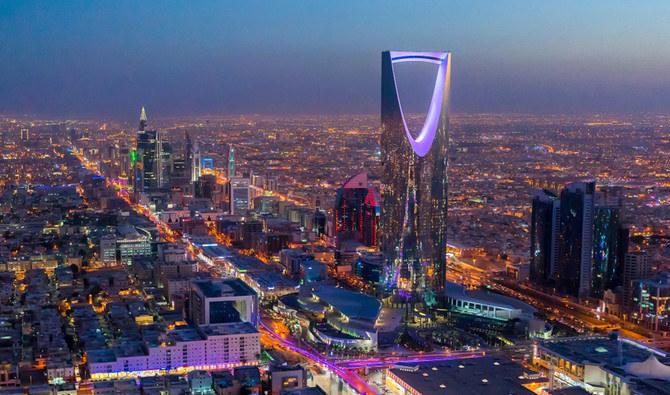
- Saudi government efforts to manage public finances, maintain balanced level of public debt contributed to rating
RIYADH: Standard & Poor’s (S&P) confirmed its credit rating for Saudi Arabia in local and foreign currencies to “A/A-1” with a stable outlook in its recently issued report, Saudi Press Agency reported on Saturday.
The agency explained the confirmation came against the backdrop of Saudi Arabia’s continued efforts with notable reforms in recent years, and its achievement of structural improvements that contributed to supporting the sustainable development of the non-oil sector.
Saudi government efforts to manage public finances and maintain a balanced level of public debt also contributed to the rating.
S&P also expected the Kingdom’s gross domestic product (GDP) to grow by 0.2% during the current year, due to the decrease in oil production quantities, SPA added.
It also expected Saudi growth to increase at a rate of 3.4% during the years 2024-2026, based on the increase in the expected amount of orders for oil, in addition to the noticeable growth in the non-oil sector.

- Deal unlocks new market opportunities and advances Aramco’s global downstream expansion
RIYADH: Saudi-based Aramco, one of the world’s leading integrated energy and chemicals companies, has agreed to purchase a 100 percent equity stake in Esmax Distribuscion SpA from Southern Cross Group, a Latin America-focused private equity company.
The transaction is subject to certain customary conditions, including regulatory approvals, Aramco said in a statement issued on Friday.
Esmax is a leading diversified downstream fuels and lubricants retailer in Chile and its national presence includes retail fuel stations, airport operations, fuel distribution terminals and a lubricant blending plant.
Aramco’s planned acquisition of Esmax would be its first downstream retail investment in South America, recognizing the potential and attractiveness of these markets while advancing Aramco’s strategy of strengthening its downstream value chain.
The transaction would enable Aramco to secure outlets for its refined products and help expand its retail business internationally.
The acquisition would also further unlock new market opportunities for Valvoline-branded lubricants, following Aramco’s acquisition of the Valvoline global products business in February.
Mohammed Al-Qahtani, Aramco downstream president, said: “This agreement is yet another milestone in our strategy to grow Aramco’s downstream presence globally and expand our retail, lubricants and trading businesses.
“We are excited by the opportunities it presents, creating synergies with our extensive trading and manufacturing systems,” he said.
“Moreover, it creates a platform to launch the Aramco brand both in Chile and South America more broadly, unlocking significant potential to capitalize on new markets for our products,” he said.
“Esmax is a well-run business in Chile with more than 100 years of experience with quality assets and growth potential, Al-Qahtani said. “We are excited to have the outstanding people of Esmax join the Aramco family as we continue to execute on our downstream strategy.”
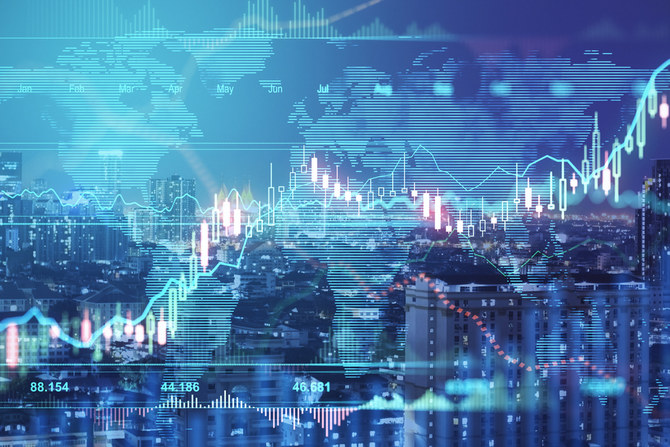
LONDON/TOKYO: European stocks were set for their best weekly performance in two months, buoyed by hopes that the European Central Bank is ending its rate rise cycle and data that suggested China’s wobbly economy may be regaining some momentum, according to Reuters.
Europe’s Stoxx 600 index, which rose 1.5 percent on Thursday, gained a further 0.7 percent on Friday to put it on track for a 2.1 percent weekly gain, the most since the week ending July 14.
But futures trading suggested Wall Street equities would not extend the rally, as the mood in New York remained cautious ahead of the Federal Reserve’s monetary policy meeting next week and investors weighed divergent outlooks for the US and euro zone.
The European Central Bank hiked its key interest rate to a record 4 percent on Thursday and warned it would stay at that level until above-target inflation was dealt with.
Still, markets clung to hopes that the ECB, as the euro zone economy weakens, will wait for more evidence its monetary tightening so far has slowed the economy and then tilt toward rate cuts.
“The key thing for markets is that a dovish hike suggests we are getting closer to the end,” said Parisha Saimbi, G10 FX rates strategist at BNP Paribas in London. “They are (also) going to wait for the pass through of monetary policy so far, and to this extent equities are performing well.”
Also bolstering European investors’ risk appetite on Friday, data showed Chinese gauges of retail sales and industrial output for August topped economists’ expectations, though its property slump deepened, threatening to undercut a flurry of support measures.
Analysts had become increasingly pessimistic about the outlook for the world’s second-largest economy, as the property downturn fed into weak consumption and rising youth unemployment.
China’s central bank’s late on Thursday cut banks’ reserve ratio requirements for a second time this year, in a move designed to stimulate the economy by increasing the flow of credit to households and businesses.
“When you look at the tactical stimulus Chinese authorities are putting in place and the slight stabilization of the economy, it gives you a reason to start feeling constructive,” said Florian Ielpo, head of macro at Lombard Odier Investment Management.
Meanwhile, yields on euro zone government bonds rose on Friday after sharp drops on Thursday, suggesting debt investors were less sanguine on the outlook for ECB policy.
US S&P 500 futures pointed to a 0.1 percent rise on Friday, after the cash index rose 0.8 percent on Thursday.
The yield on the two-year US Treasury note, which moves inversely to the price of the debt and tracks interest rate expectations, rose 2 basis points to 5.01 percent.
A gauge of the dollar’s performance against major currencies also stuck close to a six-month peak it had reached overnight.
US data on Thursday showed producer prices increased by the most in more than a year in August and retail sales also rose more than expected.
Traders are betting the Fed will leave its key interest rate unchanged at 5.25 percent-5.5 percent next week. But the possibility that the central bank will keep rates at that level for months to come as the economy avoids a long-predicted recession is dulling the allure of US government bonds for now.
In currency markets, the euro rose 0.2 percent to $1.066, as it clawed its way off an overnight trough of $1.0632, the lowest level since March 20.
The so-called US dollar index edged down 0.18 percent to 105.2, after hitting the highest since early March at 105.43 on Thursday. The gauge remains on track for its ninth straight weekly advance, the longest run in nine years.


